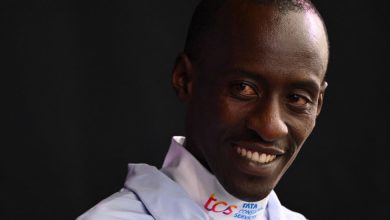What It’s Been Like at the First Women’s March Madness

COLUMBIA, S.C. — It is hard to escape Cocky the Gamecock at the University of South Carolina. The mascot’s statue stands prominently on the quad, and its garnet feathers are displayed on doors and banners across campus. Nowhere is that more apparent than at Colonial Life Arena, home to the top women’s basketball team in the country.
But as fans filled the stands in the first and second rounds of the N.C.A.A. women’s basketball tournament last weekend, new iconography emerged for the first time: the “March Madness” logo.
After 40 years of competition, the women’s tournament is starting to more closely resemble the men’s, at least on the surface. That includes the use of the March Madness language, a trademark that, until last fall, the N.C.A.A. had reserved for the men’s tournament. So while Cocky was still on the court Friday and Sunday, March Madness banners, merchandise and decals competed for fans’ attention.
It was one of a handful of changes carried out by the N.C.A.A. after a viral video at last year’s tournament led to a landmark review that detailed inequities between the men’s and women’s events. Here’s how the changes have panned out so far, in what some coaches and players say should be just the start.
The logo was (almost) everywhere.
Banners, towels, digital displays, inflatable signs, cookies, socks — the March Madness image was seemingly omnipresent at the 16 women’s tournament sites.
Dive Deeper Into the N.C.A.A. Tournaments
- A Catalyst for Change: A viral video by Oregon’s Sedona Prince led to a gender equity review in college basketball. Did the fixes go far enough?
- St. Peter’s Celebrates: The small Jesuit university in Jersey City is in high spirits after upsetting Kentucky and advancing to the round of 16.
- Returning to the Big Stage: After years away from the tournament, these women’s teams made history before taking the floor.
- A Scout at Heart: Omar Minaya, a former Mets general manager, is a proud dad at Providence games. But he’s also watching for pro talent.
Those watching on television were also able to see the logo superimposed on the courts (tournament organizers said decals will be applied to the women’s courts starting in the round of 16 games this week, which will be played at neutral sites rather than at the home arenas of top teams).
Fans, athletes and coaches noticed the difference.
“It’s a lot — it feels different,” South Carolina’s coach, Dawn Staley, said Friday. “It doesn’t feel like we’re at our home gym. I know it’s an advantage for us, but you can’t tell from walking around the building and seeing all the signage.”
Fans turned out in record numbers this year.
The deafening cheer of fans at sites around the country had the numbers to back it up: The N.C.A.A. said the first and second rounds of the women’s tournament set an attendance record of 216,890 people, just above the previous record of 214,290, set in 2004. The men’s tournament drew more than 348,000 fans in the first two rounds.
A built-in fan base helps: The top 16 women’s teams hosted the first and second rounds much to the delight of their supporters — and criticism by some visiting teams. The home-court format has been used for several years but was scrapped in 2021, when the entire tournament was held in San Antonio, Texas, because of the coronavirus pandemic.
At South Carolina’s game against Miami on Sunday, Leah Moore, a longtime Gamecocks fan, was pleased with the turnout of 9,817. “It’s good that the women are showing that we can do just as much as the men can do,” she said. “We can bring our fans, just like all the men can, too.”
More women’s teams competed this year than ever before.
The women’s tournament was expanded from 64 to 68 teams (the number the men reached in 2011), adding an inaugural First Four round, the earliest games of the competition.
Florida State, Missouri State, DePaul and Dayton competed as the lowest-seeded at-large teams, all No. 11 seeds. The four lowest-seeded automatic qualifiers — Howard, Incarnate Word, Longwood and Mount St. Mary’s — also played, as No. 16 seeds. None made it out of the first round.
Some players were still not impressed with the gift bags.
Last year’s women’s tournament, held in a Covid bubble, drew criticism for the differences in the N.C.A.A.’s offerings of weight rooms, food and gift bags for men and women. According to the N.C.A.A., both men and women received the same swag this year, including a baseball cap, socks, bag tag, notebook and sleeveless sweatshirts.
LeLe Grissett, a graduate student guard for South Carolina, said she hadn’t noticed a change in the gifts from last year. “What we have, I don’t think it’s a difference,” she said, adding that she had seen a couple of videos of women’s players not fitting into shirts that were included in their gift baskets.
Coaches and players agree: More work needs to be done.
Mementos, gifts and branding can only go so far. “The work is not done,” said Nina King, Duke’s athletic director and the chair of the Division I Women’s Basketball Committee.
“We will continue to make sure that we enhance the women’s championship and make sure that it is the very best women’s sporting event in our country,” King said.
Staley agreed and stressed the importance of more substantive changes like a proposal to adjust the N.C.A.A.’s revenue distribution model, which incentivizes investment in men’s basketball at the expense of the women’s game.
“It’s a really good start to shedding some of the inequities that occurred prior to this tournament, and it’s cool for the first year,” Staley said. But, she said, “We have to look way down the years — five, six, seven years — as many years as it took for them to uncover what was happening to our tournament.”
Some players were also cautious about the changes. Camille Hobby, a junior center for North Carolina State, said the N.C.A.A. was doing “a better job of trying to be more inclusive and diverse in the things that they do.” She added, “This a step, but I think there could still be more things in the future for us.”
She suggested more women’s sports needed to be seen on network television. (ABC has shown a handful of afternoon games this tournament, but most games have been on ESPN’s cable channels.)
“Have us on there and give us a chance to perform and show that we’re great,” Hobby said. “And we’re some of the best athletes that there are, that there can be.”





